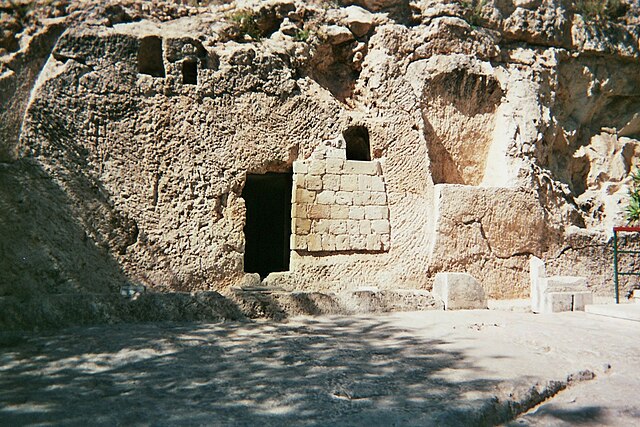The Tomb of Absalom, also called Absalom's Pillar, is an ancient monumental rock-cut tomb with a conical roof located in the Kidron Valley in Jerusalem, a few metres from the Tomb of Zechariah and the Tomb of Benei Hezir. Although traditionally ascribed to Absalom, the rebellious son of King David of Israel, recent scholarship has dated it to the 1st century AD.
Tomb of Absalom (western facade), showing the entrance to the Cave of Jehoshapat (left) behind it.
1862
1988
1890s[?]
Rock-cut tombs in ancient Israel
The use of rock-cut cave tombs in the region began in the early Canaanite period, from 3100–2900 BCE. The custom lapsed a millennium, however, before re-emerging in the earliest Israelite tombs, dating to the 9th century BCE in Jerusalem. The use of rock-cut tombs reached its peak in the 8th and 7th centuries BCE, before rapidly declining and eventually falling out of use in the 6th century BCE in some regions. It reappeared during the Second Temple period and continued into the Late Roman and Byzantine periods.
The Tomb of Benei Hezir and the so-called Tomb of Zechariah
Detail of the Tomb of Benei Hezir
Remnants of the Monolith of Silwan, a First Temple period tomb.
The so-called Garden Tomb (9th–7th century BCE)




![1890s[?]](https://upload.wikimedia.org/wikipedia/commons/thumb/9/99/Jewish_gathering_at_Tomb_of_Zacharieh%2C_Kebron.jpg/640px-Jewish_gathering_at_Tomb_of_Zacharieh%2C_Kebron.jpg)



